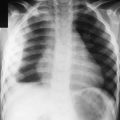Chapter 610 Growth and Development
Archer SM, Sondhi N, Helveston EM. Strabismus in infancy. Ophthalmology. 1989;96:133-137.
Emerson MV, Pieramici DJ, Stoessel KM, et al. Incidence and rate of disappearance of retinal hemorrhage in newborns. Ophthalmology. 2001;108:33-39.
Gage PJ, Zacharias AL. Signaling “cross-talk” is integrated by transcription factors in the development of the anterior segment in the eye. Dev Dyn. 2009;238:2149-2162.
Isenberg SJ, Apt L, McCarty J. Development of tearing in preterm and term infants. Arch Ophthalmol. 1998;116:773-776.
Khodadoust AA, Ziai M, Biggs SL. Optic disc in normal newborns. Am J Ophthalmol. 1968;66:502-504.
Krishnamohan VK, Wheeler MB, Testa MA, et al. Correlation of postnatal regression of the anterior vascular capsule of the lens to gestational age. J Pediatr Ophthalmol Strabismus. 1982;19:28-32.
Roarty JD, Keltner JL. Normal pupil size and anisocoria in newborn infants. Arch Ophthalmol. 1990;108:94-95.
Spieres A, Isenberg SJ, Inkelis SH. Characteristics of the iris in 100 neonates. J Pediatr Ophthalmol Strabismus. 1989;26:28-30.





